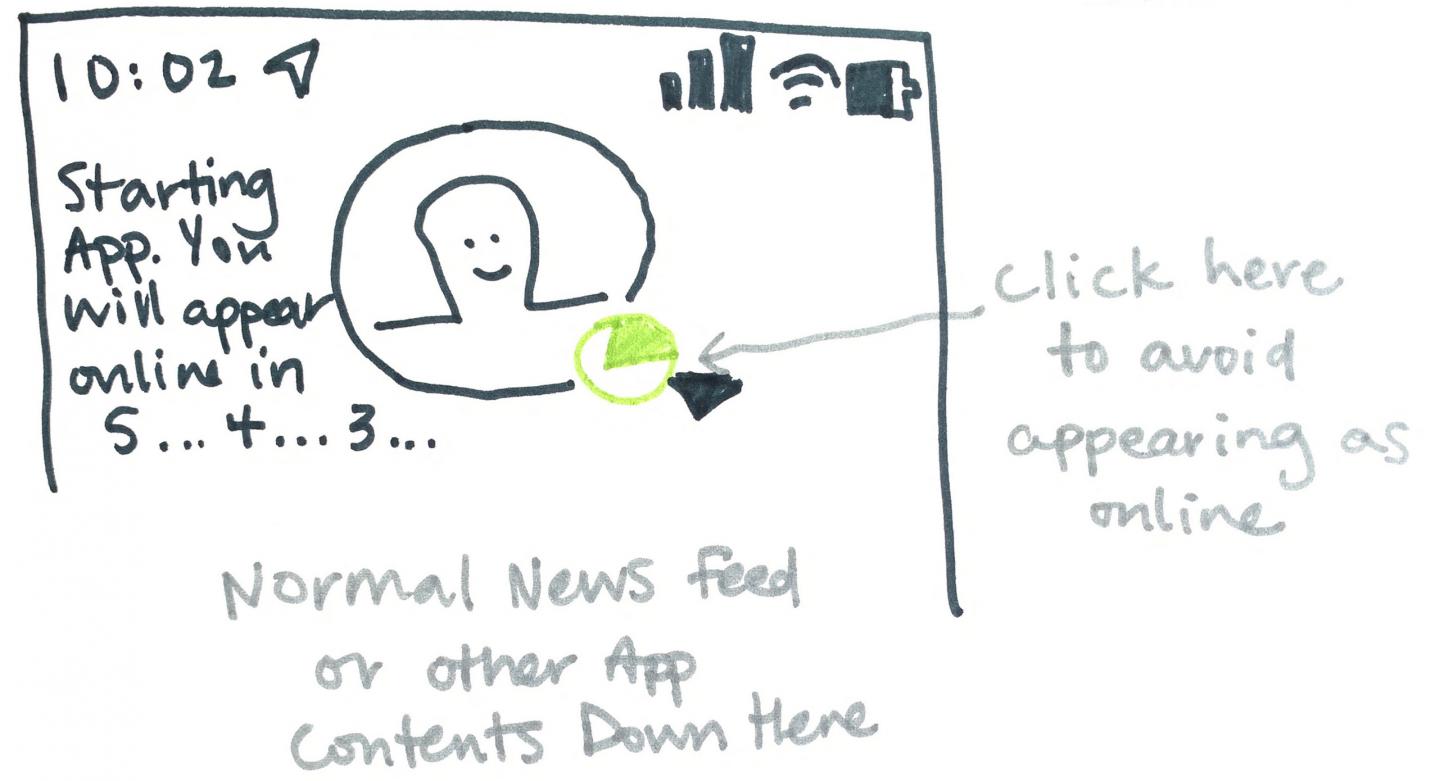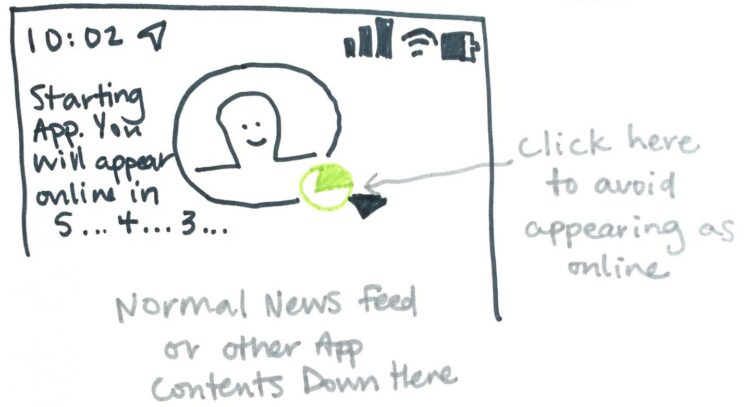
Credit: Cobb et al./ Proceedings of the 2020 ACM CHI conference on Human Factors in Computing Systems
Some apps highlight when a person is online — and then share that information with their followers. When a user logs in to a website or app that uses online status indicators, a little green (or orange or blue) dot pops up to alert their followers that they’re currently online.
Researchers at the University of Washington wanted to know if people recognize that they are sharing this information and whether these indicators change how people behave online.
After surveying smartphone users, the team found that many people misunderstand online status indicators but still carefully shape their behavior to control how they are displayed to others. More than half of the participants reported that they had suspected that someone had noticed their status. Meanwhile, over half reported logging on to an app just to check someone else’s status. And 43% of participants discussed changing their settings or behavior because they were trying to avoid one specific person.
These results will be published in the Proceedings of the 2020 ACM CHI conference on Human Factors in Computing Systems.
“Online status indicators are an unusual mechanism for broadcasting information about yourself to other people,” said senior author Alexis Hiniker, an assistant professor in the UW Information School. “When people share information by posting or liking something, the user is in control of that broadcast. But online status indicators are sharing information without taking explicit direction from the user. We believe our results are especially intriguing in light of the coronavirus pandemic: With people’s social lives completely online, what is the role of online status indicators?”
People need to be aware of everything they are sharing about themselves online, the researchers said.
“Practicing good online security and privacy hygiene isn’t just a matter of protecting yourself from skilled technical adversaries,” said lead author Camille Cobb, a postdoctoral researcher at Carnegie Mellon University who completed this research as a UW doctoral student in the Paul G. Allen School of Computer Science & Engineering. “It also includes thinking about how your online presence allows you to craft the identities that you want and manage your interpersonal relationships. There are tools to protect you from malware, but you can’t really download something to protect you from your in-laws.”
The team recruited 200 participants ages 19 to 64 through Amazon Mechanical Turk to fill out an online survey. Over 90% of the participants were from the U.S., and almost half of them had completed a bachelor’s degree.
The researchers asked participants to identify apps that they use from a list of 44 that have online status indicators. The team then asked participants if those apps broadcast their online status to their network. Almost 90% of participants correctly identified that at least one of the apps they used had online status indicators. But for at least one app they used, 62.5% answered “not sure” and 35.5% answered “no.” For example, of the 60 people who said they use Google Docs regularly, 40% said it didn’t have online status indicators and 28% were not sure.
Then the researchers asked the participants to time themselves while they located the settings to turn off “appearing online” in each app they used regularly. For the apps that have settings, participants gave up before they found the settings 28% of the time. For apps that don’t have these settings, such as WhatsApp, participants mistakenly thought they had turned the settings off 23% of the time.
“When you put some of these pieces together, you’re seeing that more than a third of the time, people think they’re not broadcasting information that they actually are,” Cobb said. “And then even when they’re told: ‘Please go try and turn this off,’ they’re still not able to find it more than a quarter of the time. Just broadly we’re seeing that people don’t have a lot of control over whether they share this information with their network.”
Finally the team asked participants a series of questions about their own experiences online. These questions touched on whether participants noticed when others were online, if they thought others noticed when they were online and whether they had changed their own behavior because they did or didn’t want to appear online.
“We see this repeated pattern of people adjusting themselves to meet the demands of technology — as opposed to technology adapting to us and meeting our needs,” said co-author Lucy Simko, a UW doctoral student in the Allen School. “That means people are choosing to go online not because they want to do something there but because it’s important that their status indicator is projecting the right thing at the right time.”
Now that most states have put stay-at-home orders in place to try to combat the coronavirus pandemic, many people are working from home and socializing only online. This could change how people use online status indicators, the team says. For example, employees can use their online status to indicate that they are working and available for meetings. Or people can use a family member’s “available” status as an opportunity to check up on them and make sure they are OK.
“Right now, when a lot of people are working remotely, I think there’s an opportunity to think about how future evolutions of this technology can help create a sense of community,” Cobb said. “For example, in the real world, you can have your door cracked open and that means ‘interrupt me if you have to,’ you can have it wide open to say ‘come on in’ or you can have your door closed and you theoretically won’t get disturbed. That kind of nuance is not really available in online status indicators. But we need to have a sense of balance — to create community in a way that doesn’t compromise people’s privacy, share people’s statuses when they don’t want to or allow their statuses to be abused.”
###
Tadayoshi Kohno, a professor in the Allen School, is also a co-author on this paper. This research was funded by the UW Tech Policy Lab.
For more information, contact Hiniker at [email protected], Cobb at [email protected], Simko at [email protected] and Kohno at [email protected].
Media Contact
Sarah McQuate
[email protected]
Original Source
http://www.
Related Journal Article
http://dx.





